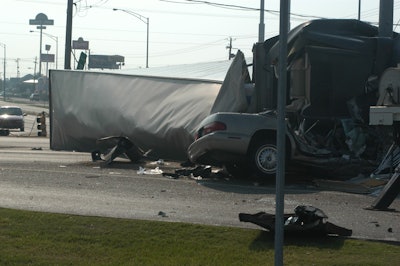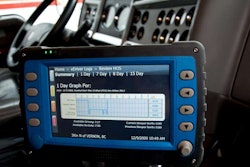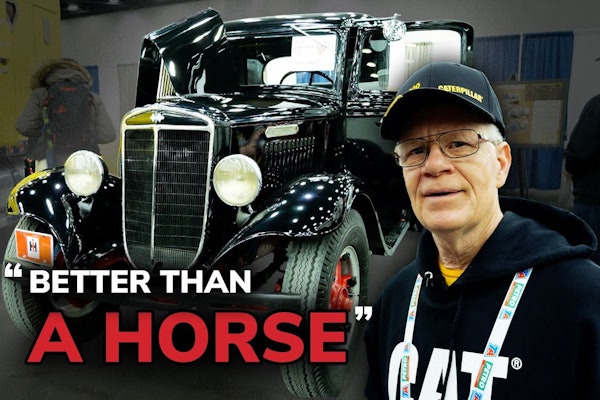One can only be sympathetic for those who’ve lost a loved one to a highway accident, whether or not a truck is involved. That sympathy doesn’t extend to the lobbying efforts of two groups representing those families — Parents Against Tired Truckers and Citizens for Reliable and Safe Highways.
Their recent letter to The American Trucking Associations criticized ATA’s recent compilation of studies that measure fault in collisions between trucks and four-wheelers. Averaging studies, ATA says it’s the passenger vehicle driver at fault about 80 percent of the time.
 The safety advocates take issue with ATA’s assessment of fault in accidents involving a heavy truck and a passenger vehicle.
The safety advocates take issue with ATA’s assessment of fault in accidents involving a heavy truck and a passenger vehicle.The letter employs the same sleight of hand of which ATA is accused. The groups’ complaint boils down to:
- Don’t talk about four-wheelers’ fault because the real issue is that disproportionate numbers of car passengers get killed when their vehicles collide with trucks.
- Experts say you can’t really tell who’s at fault in crashes.
- ATA used old studies and “misused” the facts in “its fallacious attack.”
This isn’t the forum to rehash all the fine points of the very extensive research on this subject, so consider a few points:
- “Fatalities in large truck crashes increased in 2010 by nearly nine percent, and then increased once again in 2011,” says the PATT/CRSH letter. True, those were bad years. But the bigger trend is that heavy-truck-related fatalities per vehicle mile traveled have been cut by almost two-thirds over about 30 years.
- Yes, there can be difficulties in determining fault in a crash. Evidence might be unclear, or police don’t bother to investigate. Yet there are many cases where it is clear. Look at 2010: In fatal head-on truck-car crashes where a vehicle crossed the center line, it was the four-wheeler who wandered 87 percent of the time. That’s probably not too hard to assign fault.
- How about a drunken driver? Is that enough to declare fault? These stats are not all car-truck wrecks, but from 1990 to 2010, drunken truck drivers were responsible for about 2 percent of fatal truck wrecks. Drunken four-wheelers were responsible for about 22-25 percent of fatal car wrecks.
- The safety advocates note that an accident report “often fails to indicate whether other truck problems contributed to the crash causation. For example, improperly adjusted brakes or undetected truck driver fatigue” might have been a factor. OK, but the same is more applicable for the passenger vehicle, which is held to little or no testing, and its driver, who has no hours of service to abide by.
PATT/CRASH say it’s time “to stop the cruel public relations game of shifting attention away from the unacceptable death toll caused by big trucks.”
No, the cruelest public relations tactic is the attempt to smear safe, professional drivers as being worse than reckless amateurs. There are enough studies to prove just about anything in this arena, but the vast majority of studies, as well as federal data, bear out ATA’s assertion.











